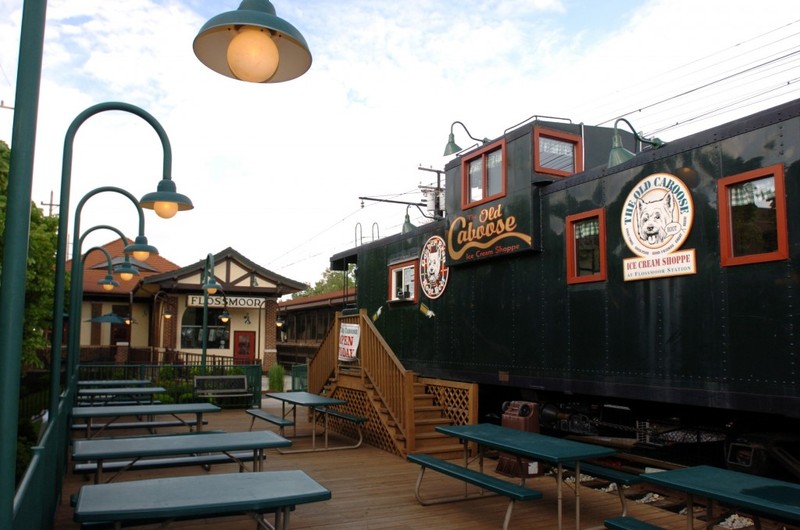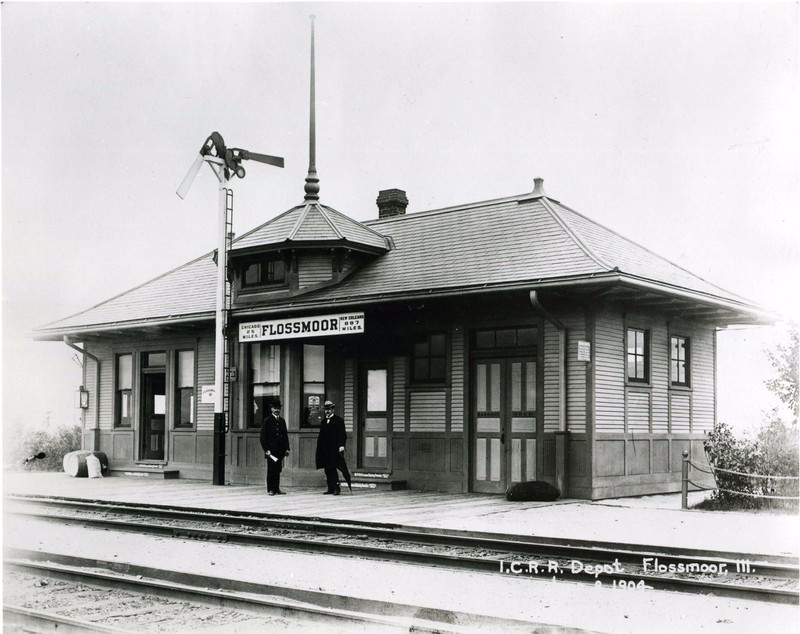Flossmoor Station (Now Flossmoor Station Restaurant and Brewery)
Introduction
Text-to-speech Audio
Beginning as a 1906 Train Station, built by the Illinois Central Railroad, it is now a brewery and restaurant. When built, there were only six homes in the community of Flossmoor. Not uncommon for suburbs surrounding Chicago (as was the case in many cities around the Turn of the Century), the area was a weekend and summer getaway for the middle class, who lived and worked in the city, but had the means to get away -- leisure time. As time went on, the popularity of the Flossmoor Station and the city’s existence as a city getaway waned. Dean and Carolyn Armstrong found the building in disrepair, so they invested in it and reopened it as Flossmoor Station Restaurant & Brewery in 1996. Trains still roll by outside the station, and the walls of the place are adorned with historical photos - the place serves as an ipso facto museum.
Images
Photo Credit: http://www.itinerariesmidwest.com/

Photo Credit: Flossmoor Public Library - 1904 Photo of the station

Photo Credit: Julie Henning - https://www.roadtripsforfamilies.com/family-dining-in-chicago-southland/

Backstory and Context
Text-to-speech Audio
Beginning as a 1906 Train Station, built by the Illinois Central Railroad, it is now an award-winning brewery and restaurant. As is the case with many historical buildings, it has been transformed from something industrial to something orientated towards the service sector. However, the building also exists somewhat as a museum with pictures of historical Flossmoor and the Flossmoor Station adorning the walls.
Once an area heavily populated by Native Americans, it’s modern existence began towards the end of the Industrial Revolution. When built, there were only six homes in the community of Flossmoor. Although, it should be remembered that the area was once heavily populated by Native Americans. Not uncommon for suburbs surrounding Chicago (as was the case in many cities around the turn of the 20th century), the area was a weekend and summer getaway for the middle class, who lived and worked in the city, but had the means to get away -- leisure time. The convenience of the railroad service quickly brought new life to the ever growing area. In fact, Flossmoor is a town ostensibly created by the Illinois Central Railroad - the company purchased 160 acres in what became the town of Flossmoor in 1893.1
Originally, the company's planned to use the land for the World's Columbian Exposition, but the soil proved unsuitable. Hence, they sold the land to investors in 1898, but those investors planned to build a golf course and asked Illinois Central to extend its railway to the land, thus connecting it to Chicago. The railway company agreed, so the investors established the Homewood County Club (renamed Flossmoor in 1914).2
The Illinois Central spurred the development of housing and made sure to advertise the town with vigor, including even running free-lunch excursions and providing special services for golfers. Although most visitors were transient, going back and forth from Chicago to Flossmoor for weekend getaways, a few did make the move, including some of the railroad's executives. The town was incorporated in 1924 and the commuter line was electrified in 1926, both of which boosted the town population. However, the population remained below 1,000 until after World War II when it grew fo more than 4,500 in the 1950s and near 8,500 in 2000.3
As time went on, the popularity of the Flossmoor Station waned. In 1996, Dean and Carolyn Armstrong found the building in disrepair, but decided to invest in the building by transforming it into the Flossmoor Station Restaurant & Brewery, and with eighty brewing awards it has remained a viable business. Trains still move through town close to the historical station, pictures line the walls of the old station and trains, and there’s an ice cream shop attached to the restaurant that operates out of a former Illinois Central Railroad caboose.4
Although it operates as a successful service industry focused business today, it represents the changing nature of economics from the early 1900s to the early 2000s; from industry to service. Many people today live in Flossmoor and nearby Homewood and travel to Chicago for work, rather than live in the city and travel to Flossmoor for leisure. One visit to the brewery can provide insight into the entire history.
Although it operates as a successful service industry focused business today, it represents the changing nature of economics from the early 1900s to the early 2000s; from industry to service. Many people today live in Flossmoor and nearby Homewood and travel to Chicago for work, rather than live in the city and travel to Flossmoor for leisure. One visit to the brewery can provide insight into the entire history.
Sources
1 This is the central theme of Anna B Adair and Adele Sandberg, Indian Trails to Tollways: The Story of the Homewood-Flossmoor Area (Homewood, Illinois: Fremouw Press, 1968).
2 John H. Long, "Flossmoor, IL," Encyclopedia of Chicago, chicagohistory.org, last accessed February 24, 2017, http://www.encyclopedia.chicagohistory.org/pages/462.html
3 Ibid.,
4 "About Us," Flossmoor Station Brewing Company Website, last accessed February 24, 2017,
2 John H. Long, "Flossmoor, IL," Encyclopedia of Chicago, chicagohistory.org, last accessed February 24, 2017, http://www.encyclopedia.chicagohistory.org/pages/462.html
3 Ibid.,
4 "About Us," Flossmoor Station Brewing Company Website, last accessed February 24, 2017,
http://www.flossmoorstation.com/about
